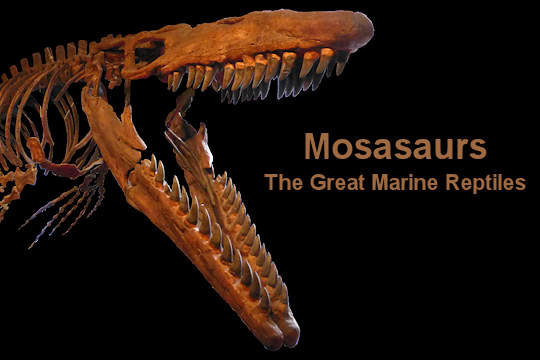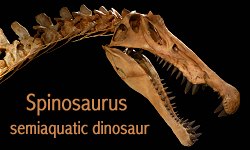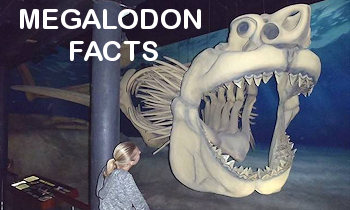Article written by: Jayson Kowinsky - Fossilguy.com
Moroccan Otodus
Why are there so many Otodus fossil shark teeth and Mosasuar teeth from Morocco?
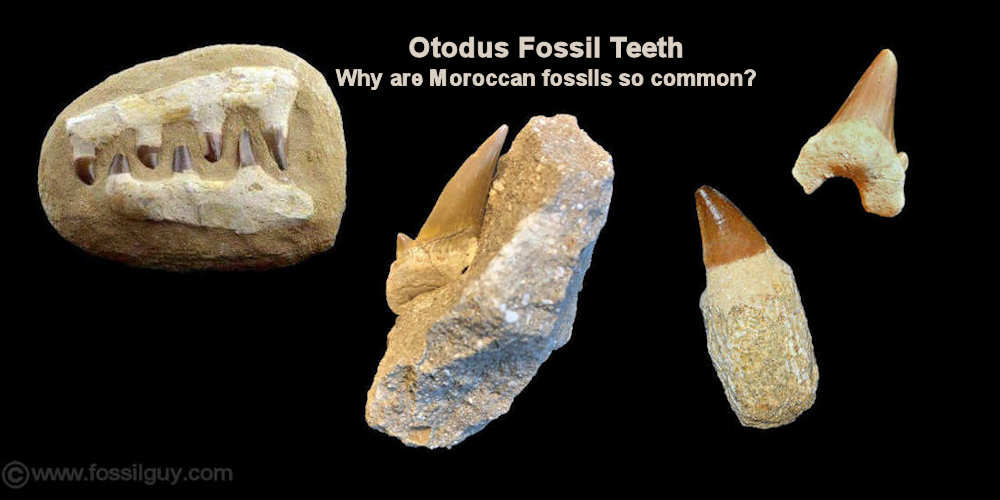
Fossil Otodus teeth and Mosasaur teeth from the phosphate mines in the Ouled Abdoun Basin of the Atlas Mountains.
If you have ever looked around a seashell shop or a store on a boardwalk at your favorite beach, you have probably seen a box of beige shark teeth and maybe even cone-like mosasaur teeth. Many shops have them, as these are some of the most abundant fossils for sale.
The shark teeth are most likely Otodus obliquus teeth and the conical teeth are most likely from a mosasaur called Prognathodon. They all come from Morocco.
Morocco is a fossil hot spot. This country is well known for their Dinosaurs of the Kem Kem beds along the Morocco-Algeria border (think Spinosaurus), the famous Trilobite mines of the Tinghir Province, and of course the mosasaur and shark teeth from the Atlas Mountains.
Why are they so abundant? It's the phosphate.
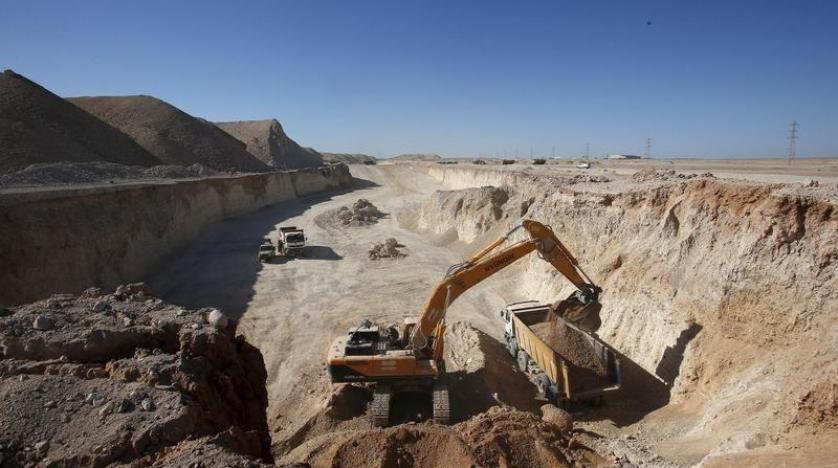
A phosphate mine in Morocco. Notice the color of the sediment, this is the same color as the fossil Otodus and Mosasaur teeth found in the deposits. Image from: Morocco World News - Article.
About 60 miles south of Casablanca lies the world's largest phosphate reserves. The three largest phosphate reserves are located in the Ouled Abdoun Basin of the Atlas Mountains near the city of Khouribga. All around this region are large-scale mining operations that produce much of the world's phosphate. In fact, they have around 700 years' worth of reserves left to mine!
Phosphate deposits form by chemical precipitation of phosphate from seawater in areas rich with nutrients and animal remains. As a result, fossils of marine animals are usually found within phosphate deposits.
The phosphate deposits around the Khouribga region were deposited over a 25-million-year time period, from the late Cretaceous to the middle Eocene when the area was at the bottom of the ocean. While excavating the phosphate, they smash through rock layers containing fossils, including the Cretaceous mosasaurs and Eocene Otodus teeth.
These fossils are a by-product of the mining operations, and since the mining is so large scale, there are countless fossils recovered by locals. Usually the rocks come out in small pieces, and the fossils are often broken. That's why usually only isolated teeth are found, and not whole mosasaur skeletons. Fossil dealers in the area will often collect the more complete ones, or place them in fake matrix for better presentation. In the United States, fossil dealers will often buy the Otodus and Mosasaur teeth wholesale from Morocco and then sift through them, looking for the few unbroken and unrepaired ones.
Of course, more fossils than Otodus shark teeth and Mosasaur teeth come from these deposits. Along with the many types of mosasaurs and the Otodus shark is another marine reptile called elasmosaurus. There are also pterosaurs (mainly teeth), countless fish, other numerous sharks, and crocodiles. There are even scarce remains of dinosaurs including an albelisaur and a titanosaur.
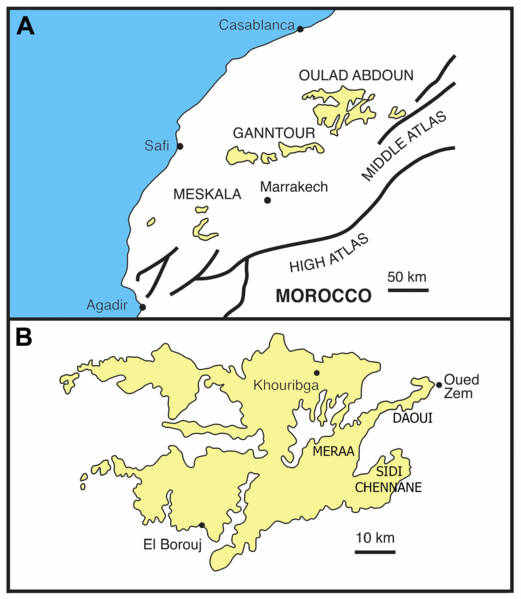
Map of central Morocco showing the phosphate basins in yellow. The zoomed in area is the Oulad Abdoun bsin around Khouribga. Image credit: Nathalie Bardet et al. (CC BY 2.5).
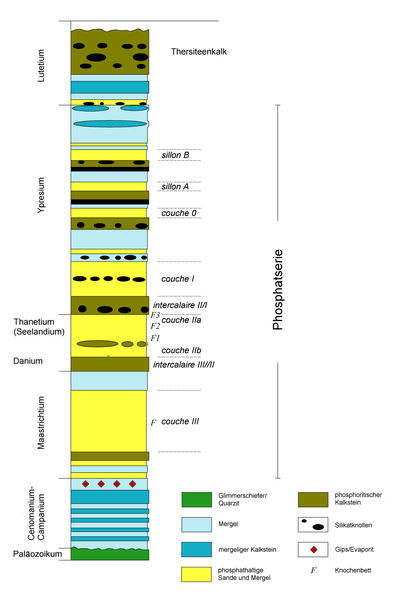
A geological cross-section of the Ouled Abdoun basin in central Morocco. The time period spans from the Late Cretaceous, through the Paleocene, and into the Middle Eocene. The olive shaded areas are layers of phosphate. Image credit: DagdaMor. (GFDL).
What exactly is an Otodus obliquus shark?
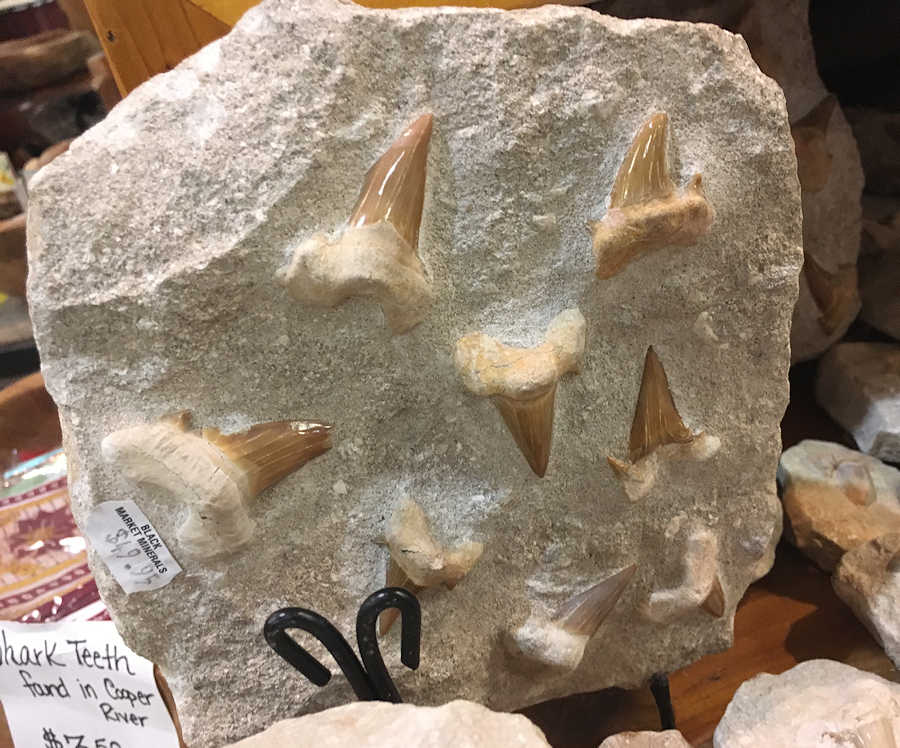
Otodus shark teeth in a composite matrix. These teeth are real, but they have been placed in an artificial matrix for display purposes.
Otodus obliquus is an ancient predecessor to the megalodon shark. Otodus obliquus lived from the Paleocene to the Eocene time period, roughly 40 to 60 million years ago. It had a nearly global distribution and was the largest shark of the time period. A large Otodus obliquus may have had a maximum length somewhere around 33 feet. The teeth were also large and reached a maximum size of around 4 inches.
It's thought Otodus originated from a smaller, but similar shark called Cretalamna. Otodus obliquus eventually evolved into the megalodon shark. Over time, the shark grew larger and more specialized. The teeth became larger and broader. The blades of the teeth became serrated and the teeth also lost the side cusps. A general lineage of these changes are reflected in different species until the apex predator megalodon was reached.
| Rough Time Period | Shark Name |
|---|---|
| Paleocene | O. obliquus |
| Early Eocene | O. mugodzharicus |
| Early Eocene | O. aksuaticus |
| Middle Eocene | O. auriculatus |
| Late Eocene/Oligocene | O. angustidens |
| Late Oligocene/Miocene | O. subauriculatus |
| Miocene/Pliocene | O. megalodon |
Otodus obliquus shark teeth most commonly come from Morocco, but there are other locations. One location in the United States is the Paleocene Aquia formation that is exposed along parts of the Potomac river.
Composite fossils / reconstructed moroccan mosasaur and Otodus teeth:
Often the fossils recovered from the phosphate mining process are broken. A popular method use by local collectors is to create a fake rock matrix, using real rock dust and glue, then placing the tooth into the matrix. If it is a mosasaur tooth, they will often also create a fake root.
To make complete mosasaur jaw sections, they will take numerous isolated teeth and align them in a row, then add fragments of modern animal bone (usually ground up goat) to create the roots and bone, and then add lighter colored matrix to fill in the gaps. The end result is a nice set of "mosasaur" jaws. If you ever see mosasaur jaws like the ones below, they are fake. I think the fake/composite mosasaur jaws are popular because they make nice display pieces... if you don't mind the jaw section came from a modern goat! Almost all mosasaur teeth with attached roots are also made via this method.
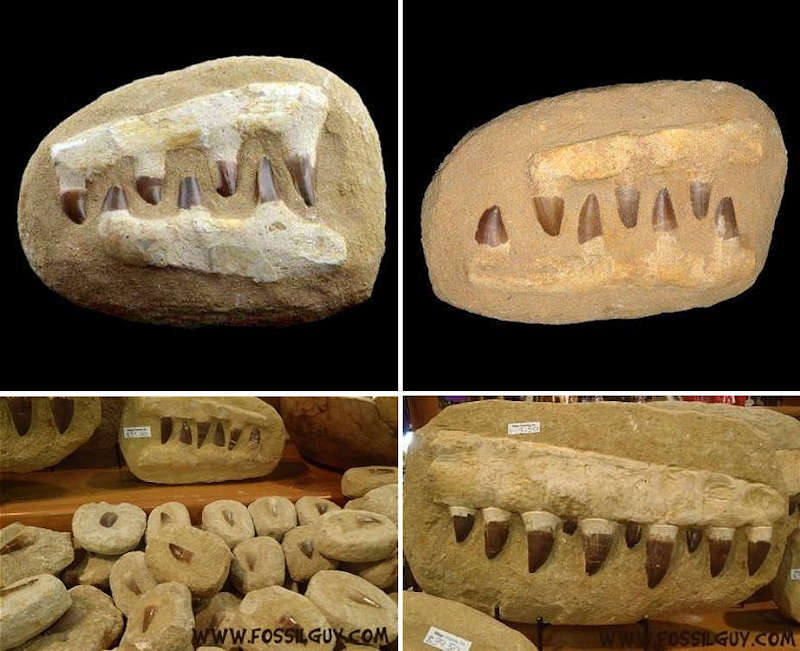
Any mosasaur fossil that looks remotely like the ones imaged above are composites. Real teeth are used, but the matrix, bone, and roots are made from dust, glue, and the bone fragments of modern animals.
Below are images of some of the fossils that commonly come out of the Khouribga phosphate region:
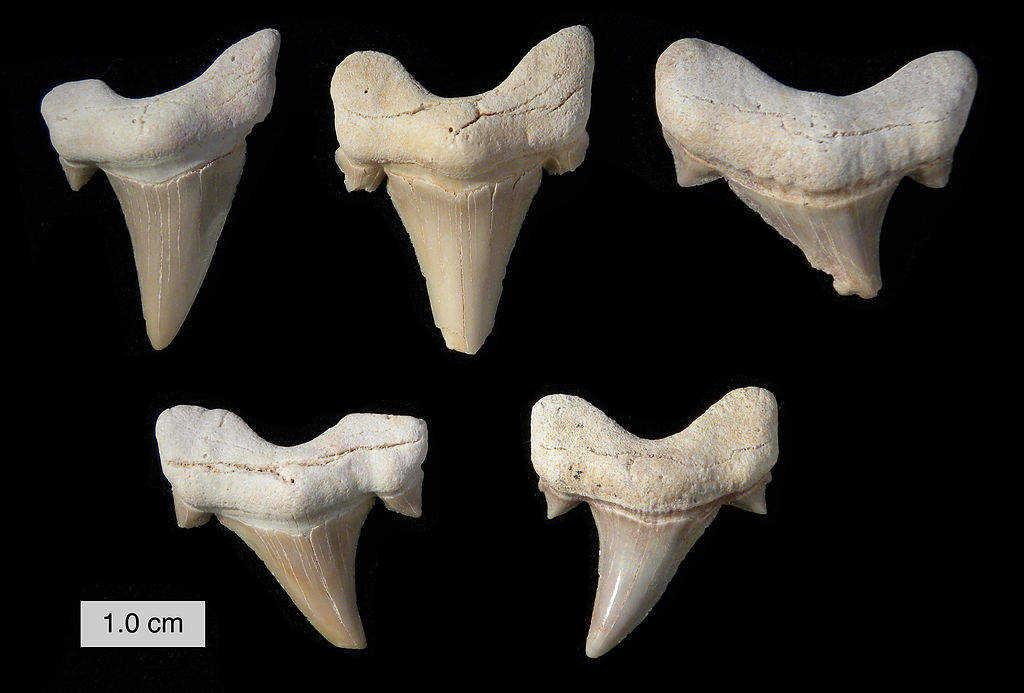
Examples of Otodus obliquus shark teeth from the phosphate mines of Morocco. Credit: Wilson44691 (CC0 1.0)

This is a mosasaur skull from the Khouribga phosphate region in Morocco. It is on display at the British Museum of Natural History. This is the most common species called Prognathodon.
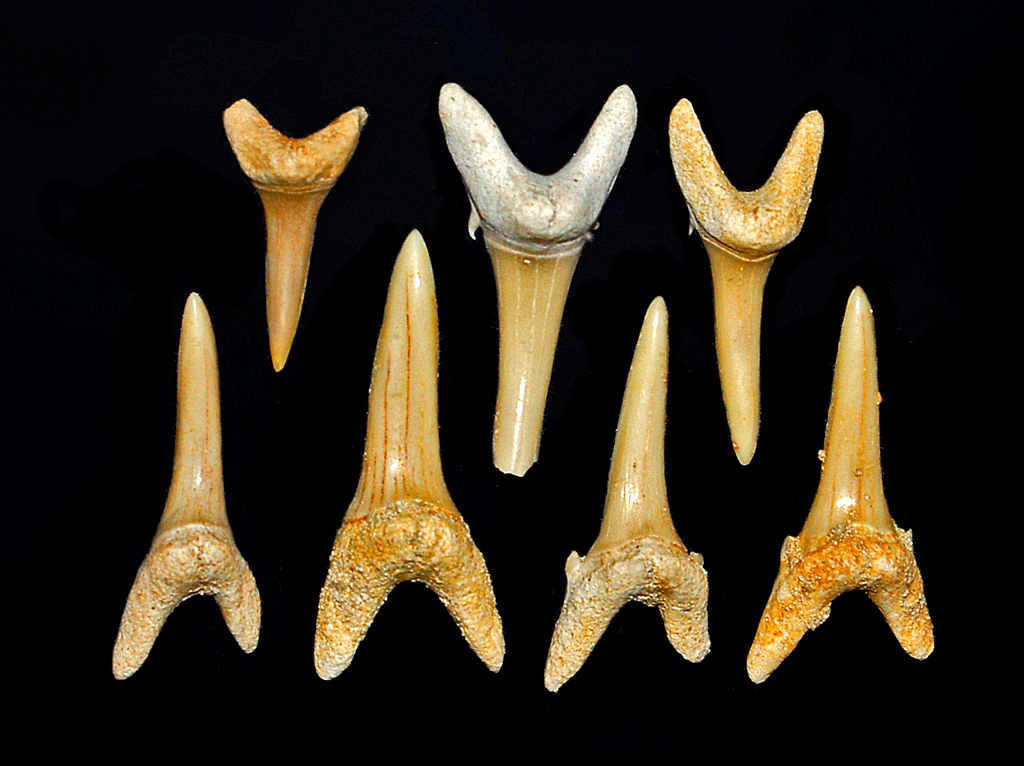
These are Carcharias tingitana shark teeth from the Khouribga region. They are also common teeth found in the mines. Image credit: Hectonichus (CC BY-SA 3.0).
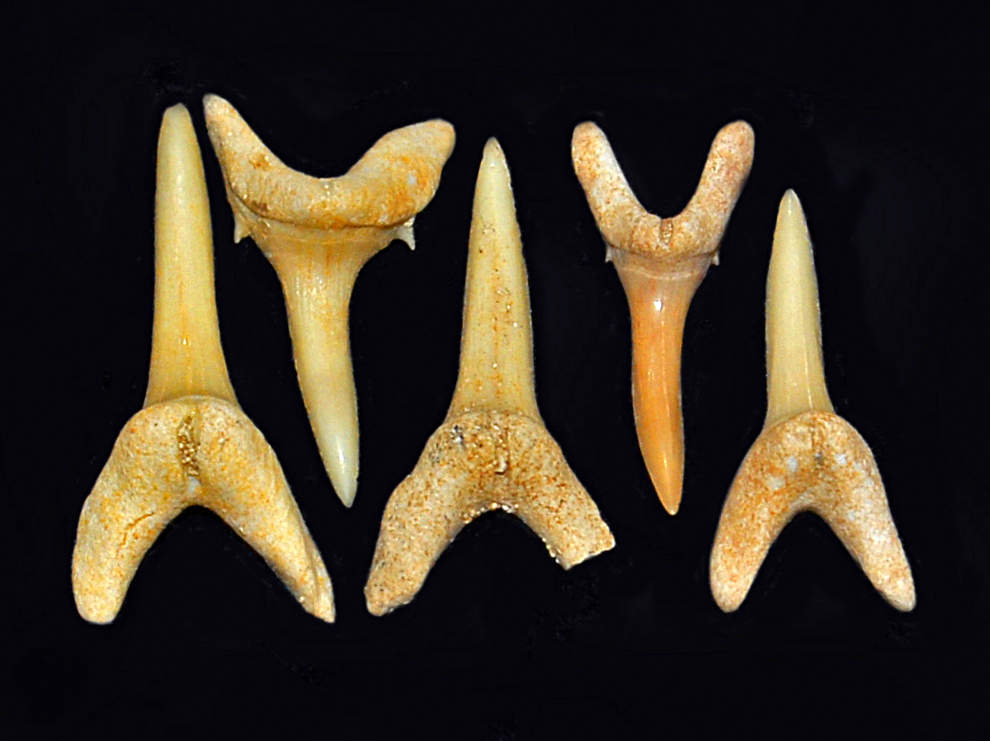
These are Striatolamia whitei shark teeth from the Khouribga region. They are also common teeth found in the mines. Image credit: Hectonichus (CC BY-SA 3.0).

These are Squalicorax kaupi teeth from the phosphate regions. Image credit: Hectonichus (CC BY-SA 3.0).
.jpg)
Thesea are two of the five types of mosasaurs found in the phosphate regions of Morocco. The left one has a genus name of Globidens, and the right one has a genus name of Prognathodon. Image credit: Parent Gery (CC BY-SA 3.0).





